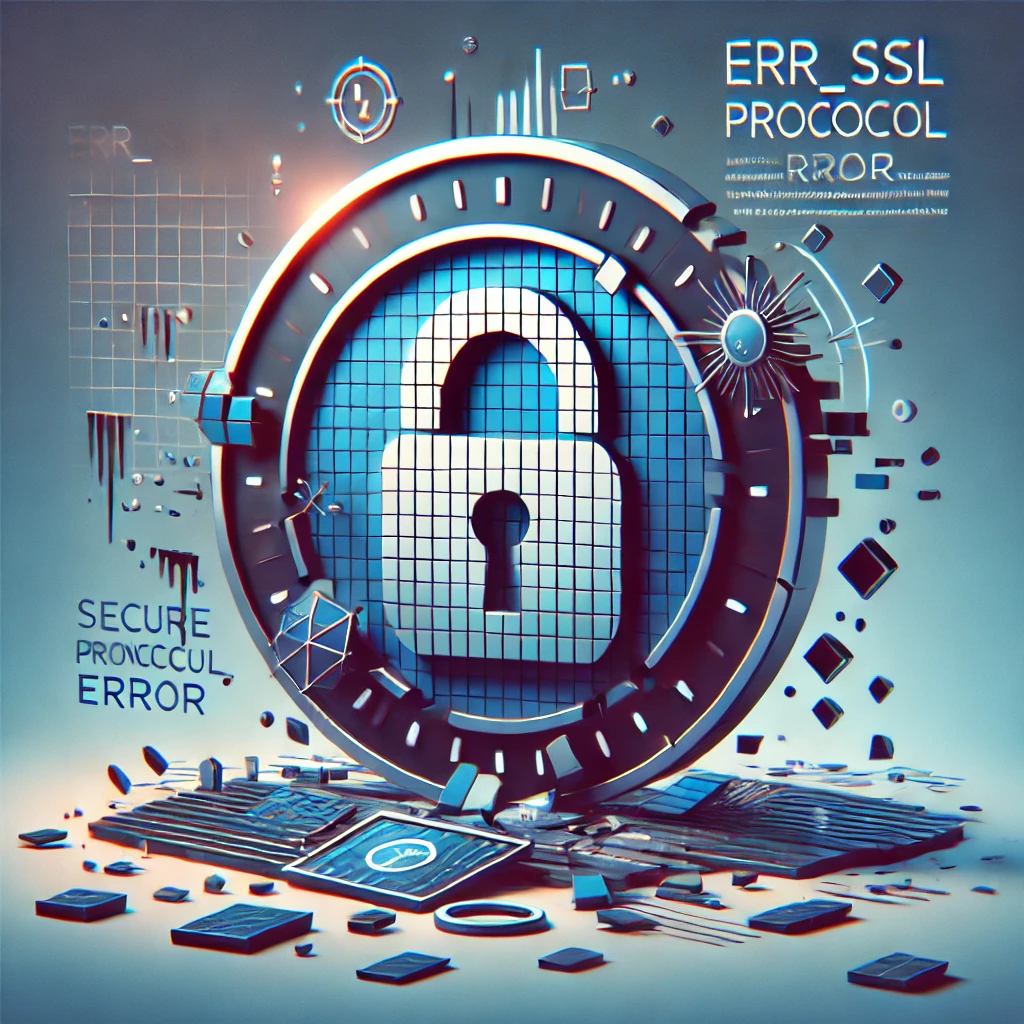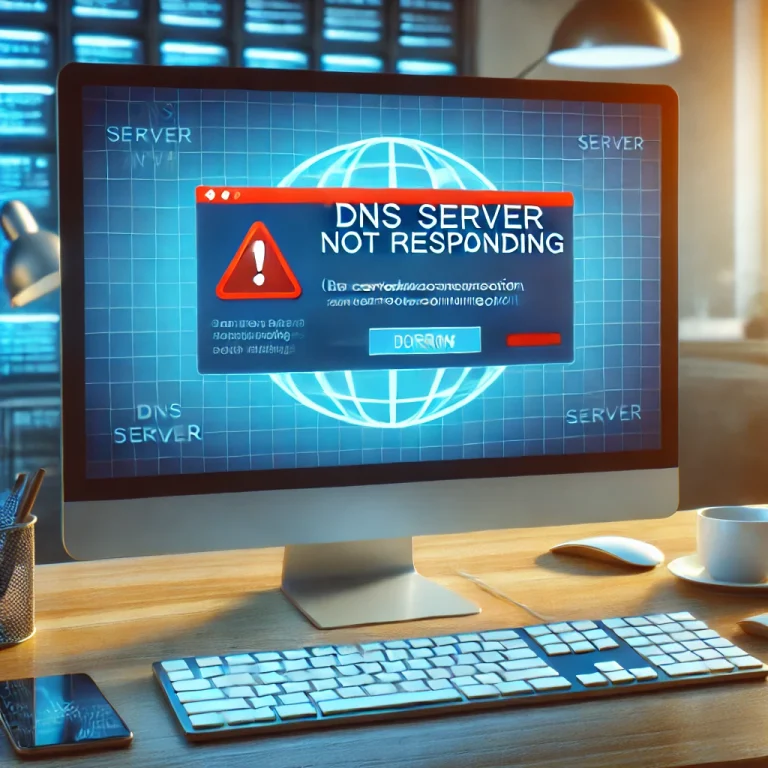ERR_SSL_PROTOCOL_ERROR: Causes, Solutions, and Troubleshooting Guide
ERR_SSL_PROTOCOL_ERROR is an error message that indicates an issue with the secure connection between your browser and a website. This problem commonly arises when accessing an HTTPS website, signaling that the SSL (Secure Sockets Layer) handshake is failing. While it might seem complicated, solving this error involves several straightforward steps. Here’s a comprehensive guide to understanding, troubleshooting, and resolving the ERR_SSL_PROTOCOL_ERROR.

Table of Contents
Introduction to ERR_SSL_PROTOCOL_ERROR
SSL errors can be frustrating, particularly if you’re trying to access an essential website or conducting sensitive tasks online. This error message usually appears as a red warning, which can cause users to avoid the website, impacting trust and traffic. In this guide, we’ll cover common causes of the ERR_SSL_PROTOCOL_ERROR and provide methods to fix it.
Understanding SSL and HTTPS
SSL (Secure Sockets Layer) is a security protocol that encrypts data transmitted between a server and a browser. When you visit a secure site (starting with HTTPS), SSL ensures your data remains encrypted. The ERR_SSL_PROTOCOL_ERROR typically indicates that this encryption protocol isn’t functioning correctly.
SSL certificates play a key role here. They authenticate websites, enabling secure connections through HTTPS, which is why the ERR_SSL_PROTOCOL_ERROR is often related to certificate or protocol configuration issues.
What Triggers the ERR_SSL_PROTOCOL_ERROR?
There are several reasons why the ERR_SSL_PROTOCOL_ERROR might occur:
- Outdated Browser: Older browser versions may not support the latest SSL/TLS protocols, resulting in connection issues.
- Incorrect System Date and Time: SSL certificates depend on the correct date and time for validation so an incorrect system time can lead to errors.
- Server Misconfiguration: The server’s SSL/TLS setup may be faulty, causing an SSL handshake failure.
- SSL Certificate Issues: Problems with the SSL certificate, such as expiration or configuration errors, can also trigger this error.
Each cause requires specific troubleshooting steps, which we’ll explore in the next sections.
Common Browsers Showing ERR_SSL_PROTOCOL_ERROR
The ERR_SSL_PROTOCOL_ERROR message can appear in all major browsers, including Chrome, Firefox, Safari, and Edge. The way the error message is presented might vary slightly between browsers, but the troubleshooting steps remain largely consistent.
- ERR_SSL_PROTOCOL_ERROR in Chrome: This error usually appears with a message like, “This site can’t provide a secure connection.”
- Firefox: May display “Secure Connection Failed,” but it indicates the same SSL protocol issue.
- Safari and Edge: These browsers also show SSL-related errors, but the specific terminology may vary.
Diagnosing ERR_SSL_PROTOCOL_ERROR
Diagnosing the cause of ERR_SSL_PROTOCOL_ERROR starts with basic checks:
- Use Developer Tools: Most browsers have a built-in developer console that logs SSL errors. This tool can provide more detailed information about what’s causing the error.
- Check SSL Certificate Validity: You can quickly verify if a site’s SSL certificate has expired by clicking on the padlock icon in the browser’s address bar.
- Clear Browser Cache and SSL State: Cached data and previous SSL states can sometimes interfere with new secure connections. Clear the cache and reset the SSL state to eliminate this as a cause.
How to Fix ERR_SSL_PROTOCOL_ERROR
Update Your Browser: Outdated browsers can be incompatible with newer SSL/TLS protocols, which may lead to this error. Always ensure your browser is up-to-date.
Clear SSL State: Resetting your SSL state helps resolve handshake issues between the client and server. To clear the SSL state in Chrome:
- Open Settings > Advanced > System.
- Click on Open your computer’s proxy settings.
- Go to Content > Clear SSL state.
Synchronize System Date and Time: SSL certificates are highly time-sensitive. Ensure your device’s date and time are accurate. On most systems, setting the time to synchronize automatically will correct any discrepancies.
Disable Chrome Extensions: Some Chrome extensions may interfere with SSL connections. Try disabling all extensions and reloading the page to see if this resolves the error.
Advanced Troubleshooting Steps
Check the Certificate Authority (CA): If the SSL certificate is from a non-trusted or unverified Certificate Authority, your browser may reject the connection. Confirm that the certificate authority is legitimate and widely recognized.
Reinstall SSL Certificate: If you’re the website administrator and encountering this error, reinstalling the SSL certificate may help resolve misconfigurations or expired SSL certificates.
Adjust Firewall or Antivirus Settings: Firewalls and antivirus programs sometimes block SSL connections due to strict security protocols. Temporarily disable these programs or whitelist the problematic website to see if it resolves the error.
ERR_SSL_PROTOCOL_ERROR on Mobile Devices
SSL protocol errors can also appear on mobile devices. Here’s how to troubleshoot them:
- Android: Try updating your browser and clearing its cache. If the problem persists, disable any VPN or proxy settings, as these can interfere with SSL connections.
- iOS: Ensure Safari is up-to-date and clear the browser history. Additionally, check the date and time settings to confirm they’re accurate.
Ensuring HTTPS and SSL Compliance
To maintain a secure environment and avoid SSL protocol errors, adhere to HTTPS standards. Regularly renewing your SSL certificates and choosing strong encryption standards ensures that your site remains compatible with modern browsers and secure against potential vulnerabilities.
Using SSL Labs to Test SSL Configuration
SSL Labs offers a free tool to test your server’s SSL/TLS configuration. This tool checks protocol compatibility, encryption strength, and potential vulnerabilities. Websites are graded on their SSL security levels, with A+ being the highest.
Testing Your SSL Setup:
- Go to SSL Labs and enter your website URL.
- Check the results for protocol strength and configuration issues.
- Follow recommendations to improve your SSL security grade.
When to Contact Your Hosting Provider
If you’re unable to resolve the ERR_SSL_PROTOCOL_ERROR on your own, it might be time to contact your hosting provider. They can help identify server-side issues, such as certificate misconfigurations or protocol mismatches. When reaching out, be sure to provide as much information as possible about the error, including any diagnostic results.
Preventing Future SSL Protocol Errors
Use a Reliable SSL Provider: Ensure you obtain your SSL certificates from a reputable provider with extensive support and trusted certificates.
Regular Browser Updates: Keeping browsers up-to-date reduces the risk of encountering SSL protocol incompatibilities.
Follow Best Server Practices: Regularly update your server’s software and monitor the SSL/TLS configuration to prevent errors from arising.
Summary of Solutions
- Update Browsers and System Time
- Clear SSL State and Browser Cache
- Check and Renew SSL Certificates
- Use SSL Testing Tools
- Contact Hosting Provider for Advanced Issues
Following these steps should help you troubleshoot and resolve the ERR_SSL_PROTOCOL_ERROR.
Frequently Asked Questions
What causes the ERR_SSL_PROTOCOL_ERROR?
This error can result from outdated browsers, incorrect system time, SSL certificate issues, or server misconfigurations.
How can I fix the ERR_SSL_PROTOCOL_ERROR in Chrome?
Try updating your browser, clearing SSL state, synchronizing the system date and time, and disabling extensions.
Why does my mobile device show ERR_SSL_PROTOCOL_ERROR?
On mobile, this error may occur due to incorrect date and time settings, outdated browsers, or VPN/proxy configurations.
Can antivirus software cause ERR_SSL_PROTOCOL_ERROR?
Yes, firewalls and antivirus programs with strict security protocols can sometimes block SSL connections.
How often should I renew SSL certificates?
SSL certificates typically need to be renewed annually, but it’s essential to monitor their expiration date to avoid disruptions.
How do I test my SSL configuration for strength?
You can use SSL Labs to test your SSL setup for protocol compatibility and encryption strength.
Conclusion
The ERR_SSL_PROTOCOL_ERROR is a common issue that arises due to SSL configuration, browser incompatibilities, or certificate errors. By following the troubleshooting steps and preventative measures outlined above, you can maintain a secure, reliable browsing experience. Prioritize SSL compliance and keep your software updated to avoid SSL-related issues in the future, ensuring secure connections for all users.






